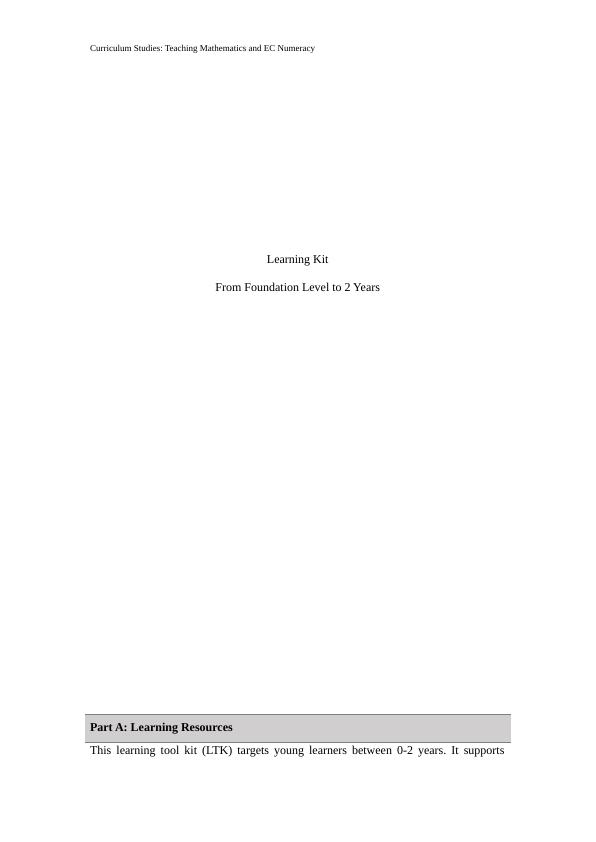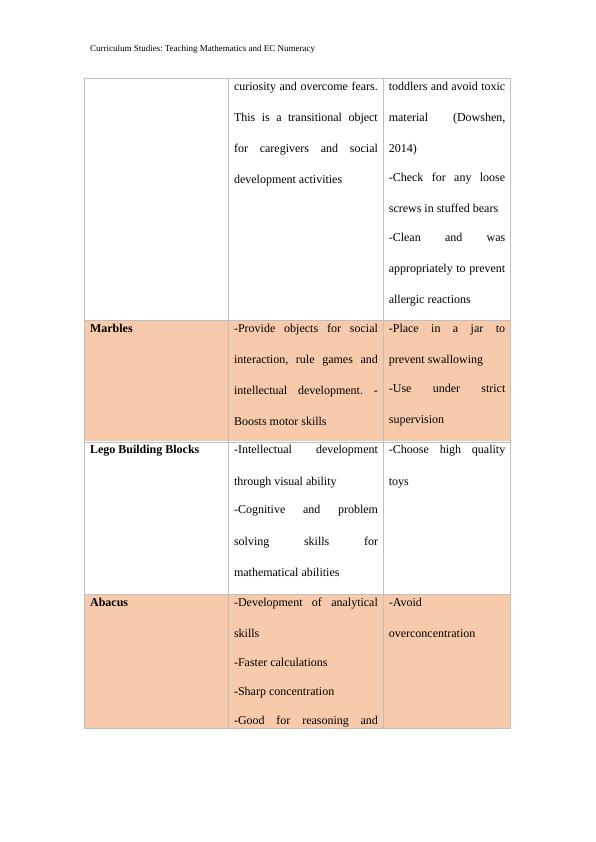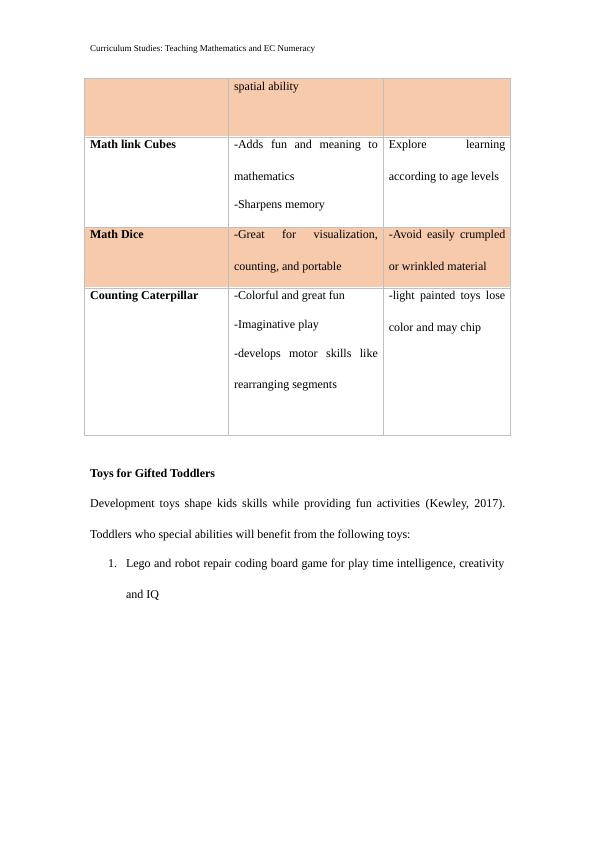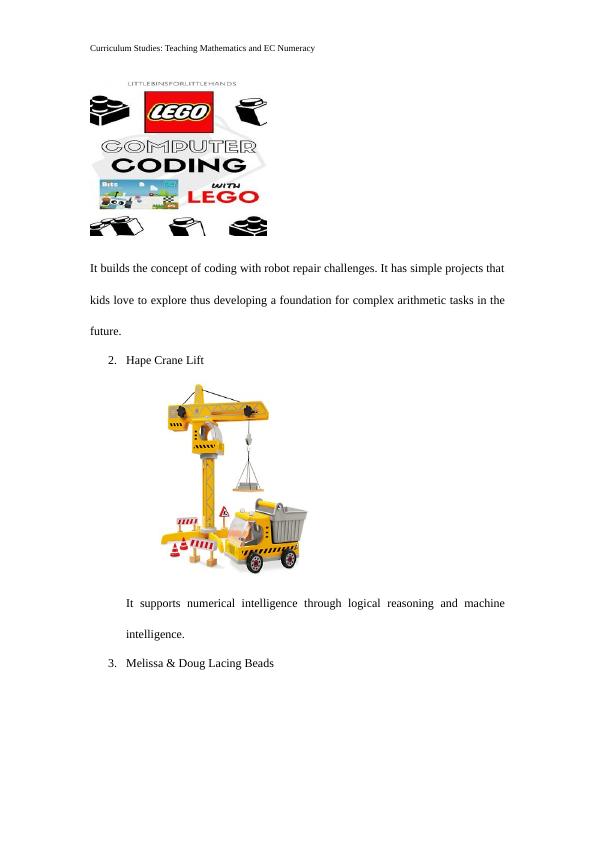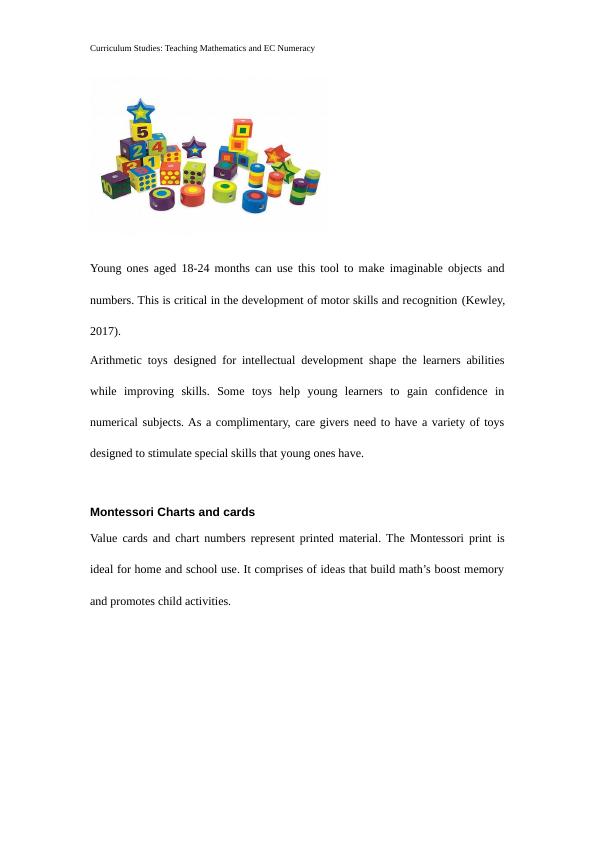Curriculum Studies: Teaching Mathematics and EC Numeracy Learning Kit
25 Pages3343 Words319 Views
Added on 2023-06-14
About This Document
This learning tool kit (LTK) targets young learners between 0-2 years. It supports curricular competencies from the NSW Mathematics Syllabus for the Australian Curriculum. Designed with self-regulated learning, it is effective in strategic development of numeracy for progressive classroom development.
Curriculum Studies: Teaching Mathematics and EC Numeracy Learning Kit
Added on 2023-06-14
ShareRelated Documents
End of preview
Want to access all the pages? Upload your documents or become a member.
Mathematics for Young Children (Doc)
|17
|4930
|51
Early Years Teaching: A Literature Review
|11
|2620
|473
Literacy and Numeracy Capabilities in the Australian Curriculum
|11
|3030
|450
Math 2A Unit 4: Process Numbers for Stage 6 Year 11-12
|22
|3255
|176
Numeracy In Play (for 0-5 Years)
|19
|1166
|90

